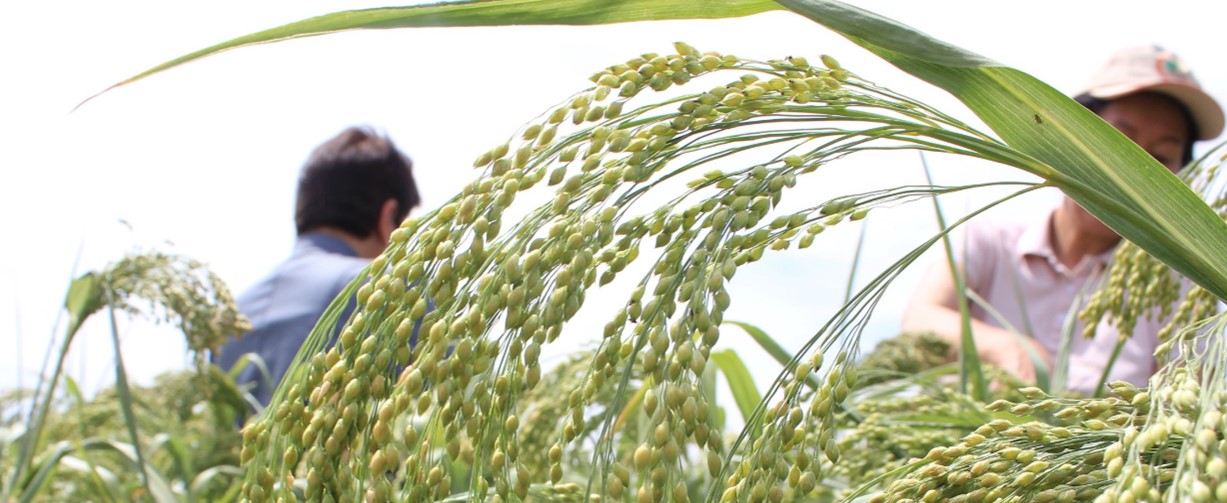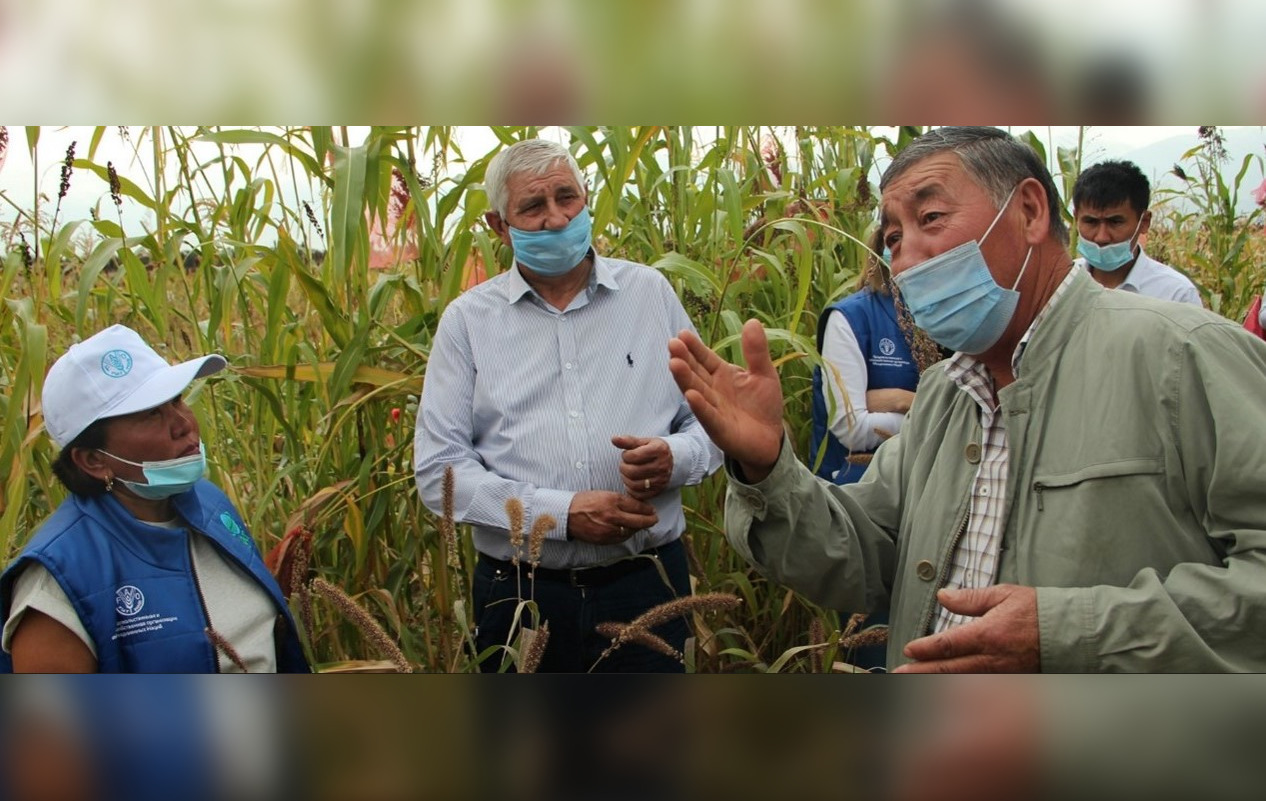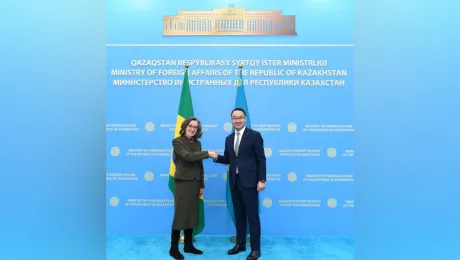In Central Asian countries, the FAO/GEF project "Integrated Natural Resources Management in Drought-prone and Salinized Agricultural Production Landscapes in Central Asia and Turkey" (CACILM-2) is nearing completion
Over five years, effective cultivation technologies for drought-resistant crops and soil salinity reduction were introduced across thousands of hectares of marginal farmland in the region. Plans for the sustainable management of invaluable natural resources, particularly pastures, were developed and remain active. The productivity and condition of these pastures are vital to the livelihoods of millions in Central Asia, DKnews.kz reports
Amid the challenging circumstances of the COVID-19 pandemic, CACILM-2 significantly strengthened collaboration with government institutions managing natural resources, research institutions, and various partner organizations across the region. Through remote access, and with the support of renowned international experts, the project provided training to thousands of farmers and agricultural specialists on modern techniques and approaches for the efficient and sustainable use of land, water, and pasture resources. The project also responded effectively to emerging challenges, including providing urgent assistance to farmers in high-risk zones in Kazakhstan, Kyrgyzstan, Tajikistan, and Uzbekistan.
Educational guides, manuals, and other instructional materials on transitioning to agro-technologies that conserve water resources, including the adoption of closed-environment farming and drip irrigation systems, have been widely distributed.
In Kazakhstan, approximately 250,000 hectares were covered by sustainable land management practices, including pasture management. Partners received 37 tons of drought- and salt-resistant crop seeds, including fodder crops, and 19 types of specialized equipment. Seven soil condition maps, created with project support, are now used regularly by partners. International and national experts trained 64 "soil doctors" who can diagnose soil health issues that affect crop yields and provide recommendations for soil fertility restoration.
Additionally, extensive work was done to strengthen legal and institutional frameworks, including in pasture management, disaster risk reduction, and soil fertility restoration for 2024-2030. Optimal solutions for Kazakhstan's drought monitoring and forecasting were developed, institutional and legal analyses for salinity management were conducted, and a "Salinity Management Guide" was published on the FAO portal in Kazakh, Russian, and English. Several other key studies were carried out to promote effective approaches to sustainable natural resource management adapted to Kazakhstan’s climatic conditions.
In close collaboration with the Kyrgyz Institute of Irrigation, the project supported the development of an innovative remote water monitoring system. This included pilot sensors, a specialized software program, and the installation of the technology at six water posts in the arid Kochkor district of Naryn Province, Kyrgyzstan. This economical and highly effective solution allowed Kochkor District Water Management to reduce resource use for water management significantly. Water user associations now receive real-time water distribution information, and farmer conflicts over irrigation water have ceased.
In 2024, the project provided the Kyrgyz government with policy recommendations for automating water basin monitoring nationwide. This led to a government decision to mobilize significant resources from various sources and expand the irrigation water control system across the country, which is critical amid climate change and decreasing water availability in Central Asia.
Moreover, the project demonstrated energy-efficient "green technologies" for water delivery, including hydraulic rams and artificial glaciers. Training sessions on sustainable pasture management were organized, supporting the transition to drought-resistant fodder crops, improving pasture access for farmers, and advancing the digitization of land use maps in Kyrgyzstan.
In Tajikistan, the program focused on promoting water-saving technologies, such as drip irrigation systems, and the dissemination of drought- and salt-resistant crop varieties. The project recommended high-quality safflower seeds, resulting in nearly a tenfold increase in cultivation areas—from 150 to 1,350 hectares—in just two years.
Hundreds of farmers received training on cultivating drought-resistant crops, implementing drip irrigation systems, and creating nurseries for productive crops suited to Tajikistan’s climate. During COVID-19 restrictions, farmers received crucial support from the project: over four tons of legume and vegetable seeds, 25 tons of fertilizers, modern equipment for processing vegetables, fruits, and oil crops, and 16 greenhouses. Beneficiaries also received cash grants, aiding vulnerable households during a challenging period of isolation.
One of the most effective project directions in Turkmenistan involved constructing desert sardobas and wells, establishing nurseries with drip irrigation systems, and providing 75,000 drought- and salt-resistant seedlings in pilot areas. Fourteen greenhouses for winter seedling cultivation and resource-efficient agricultural equipment (mini-tractors, cultivators, seed drills, etc.) were provided. Achievements included integrating "sustainable desert pasture management" into the curriculum of Turkmen State University and developing a comprehensive desert pasture management plan in Central Karakum.
In Uzbekistan, the project established twelve agrometeorological stations in arid areas that provide real-time data on soil temperature and moisture. A rotational pasture management plan was developed for the 83,000-hectare "Guzor" Karakul farm, three GIS laboratories were set up, and 100 "soil doctors" were trained. Farmers in pilot areas received over 100 tons of salt- and drought-resistant seeds, 128 greenhouses were installed, and 13,500 seedlings and 100,000 grape cuttings were distributed. Additionally, two zero-tillage seeders, laser leveling equipment, 41 two-wheel tractors, 61 water pumps, and other essential farming equipment were provided. In Kamashi district, a 1,200-hectare pistachio plantation was established, and three nurseries for fruit trees adapted to the climate of the Aral Sea region were created under the “Million Fruit Trees” campaign in Karakalpakstan.
Launched in May 2018, the project aimed to broadly disseminate and scale up best practices for integrated natural resource management in marginal agricultural lands challenged by water scarcity and salinity.
"CACILM-2 provided a unique platform to promote sustainable natural resource management practices and mitigate climate change impacts," said Mahmud Shaumarov, Regional Coordinator of CACILM-2. "The project has built the capacity of both institutions and local communities to manage droughts and combat land degradation, paving the way for further actions toward achieving land degradation neutrality in Central Asia," he added.








